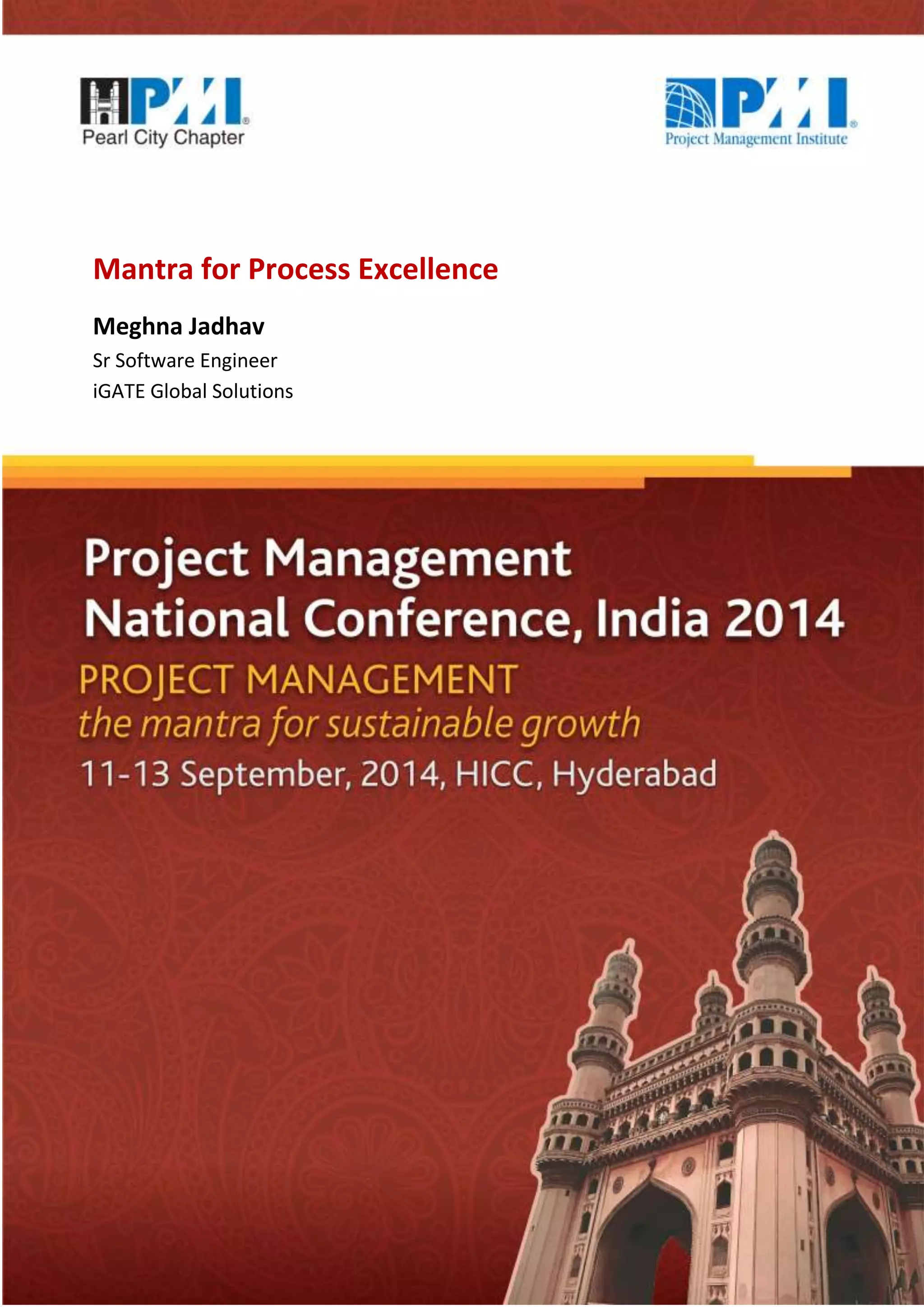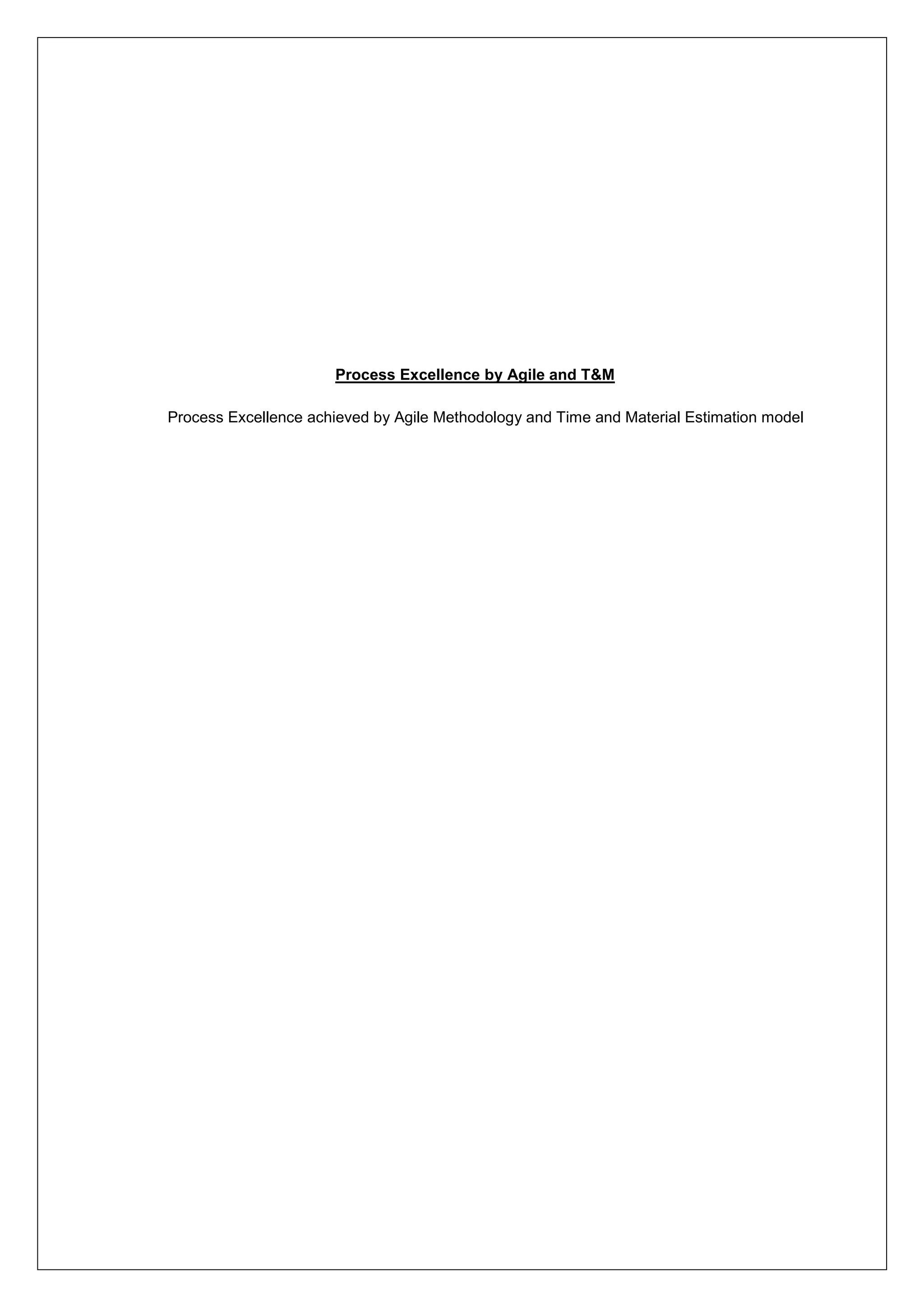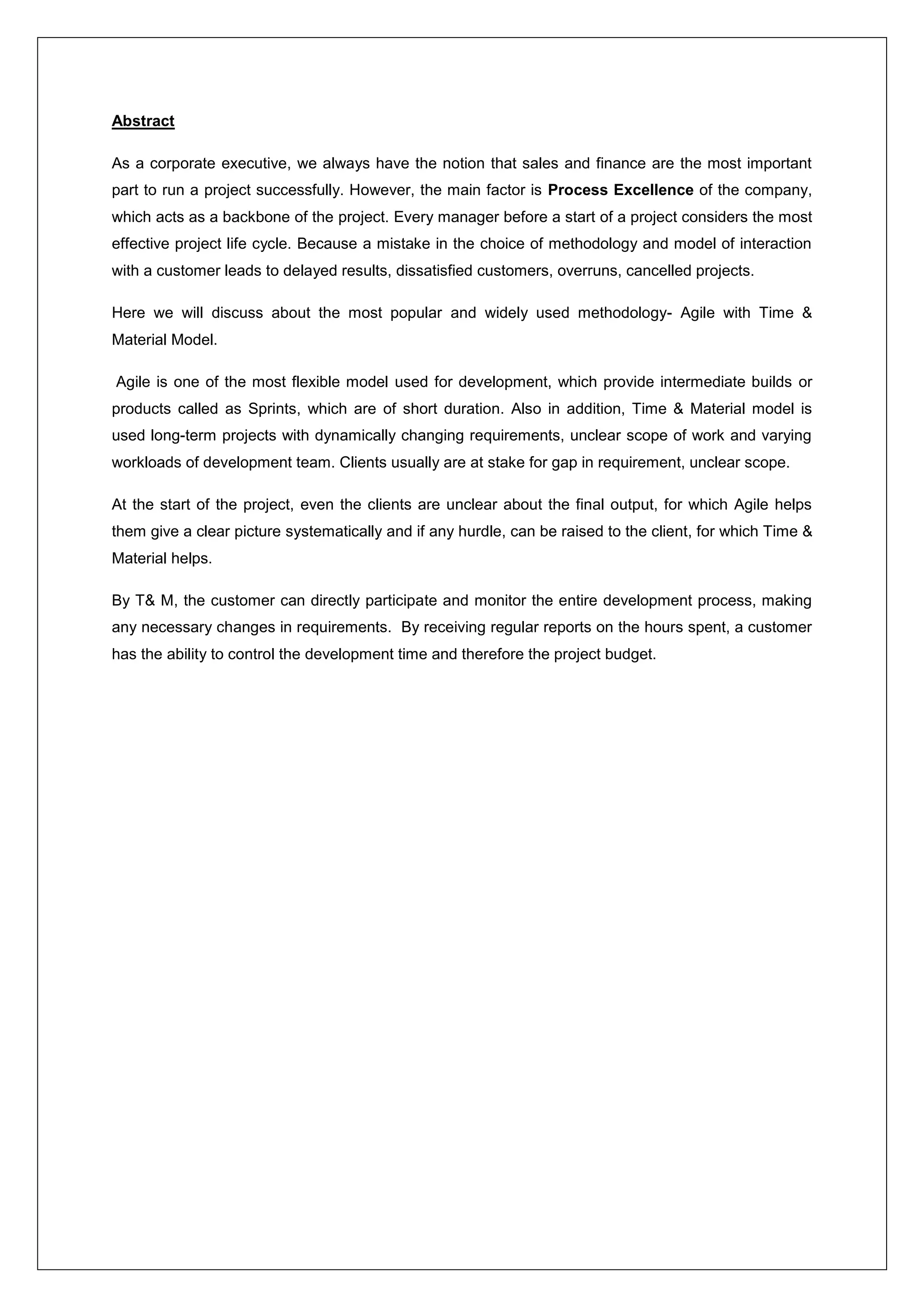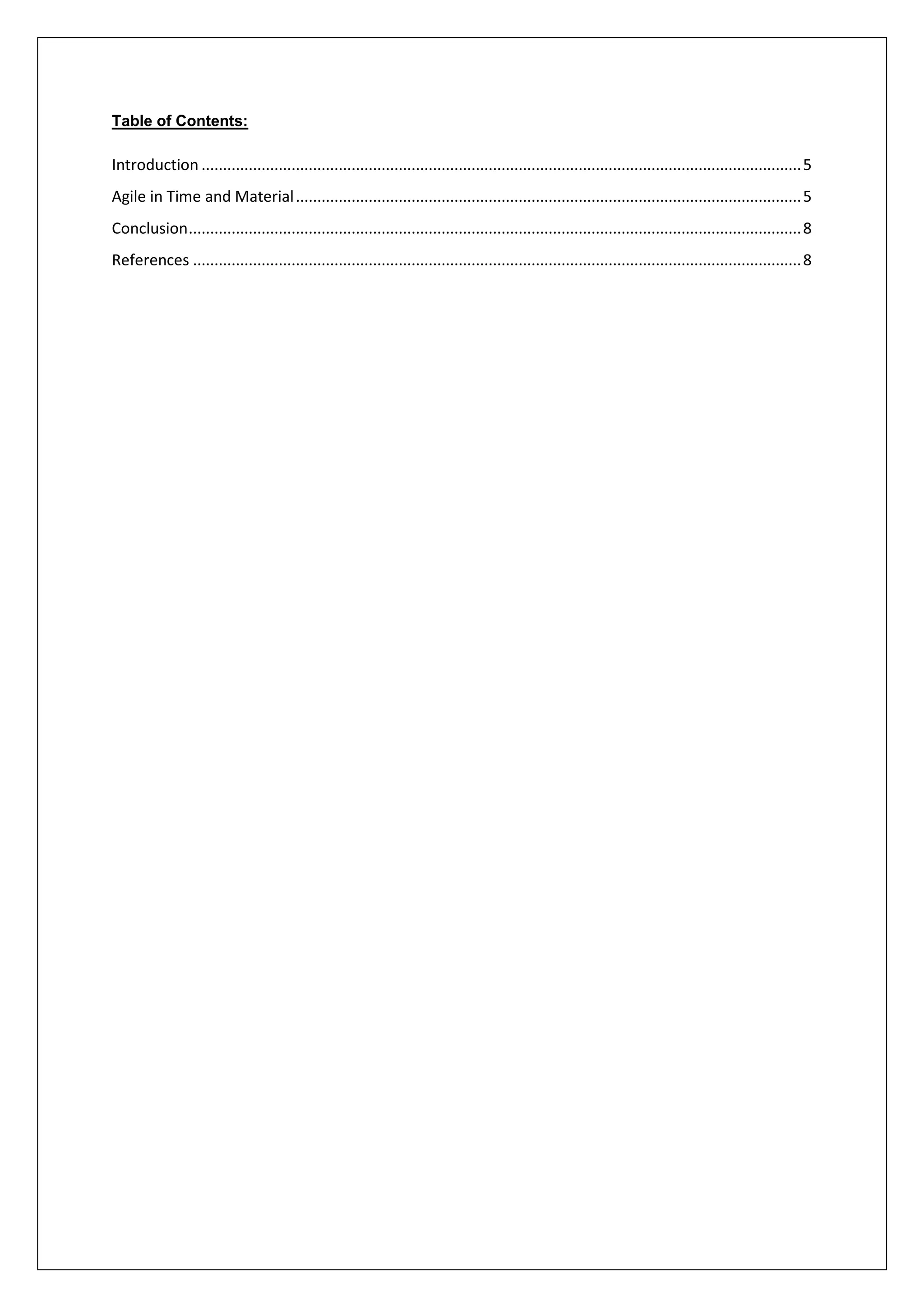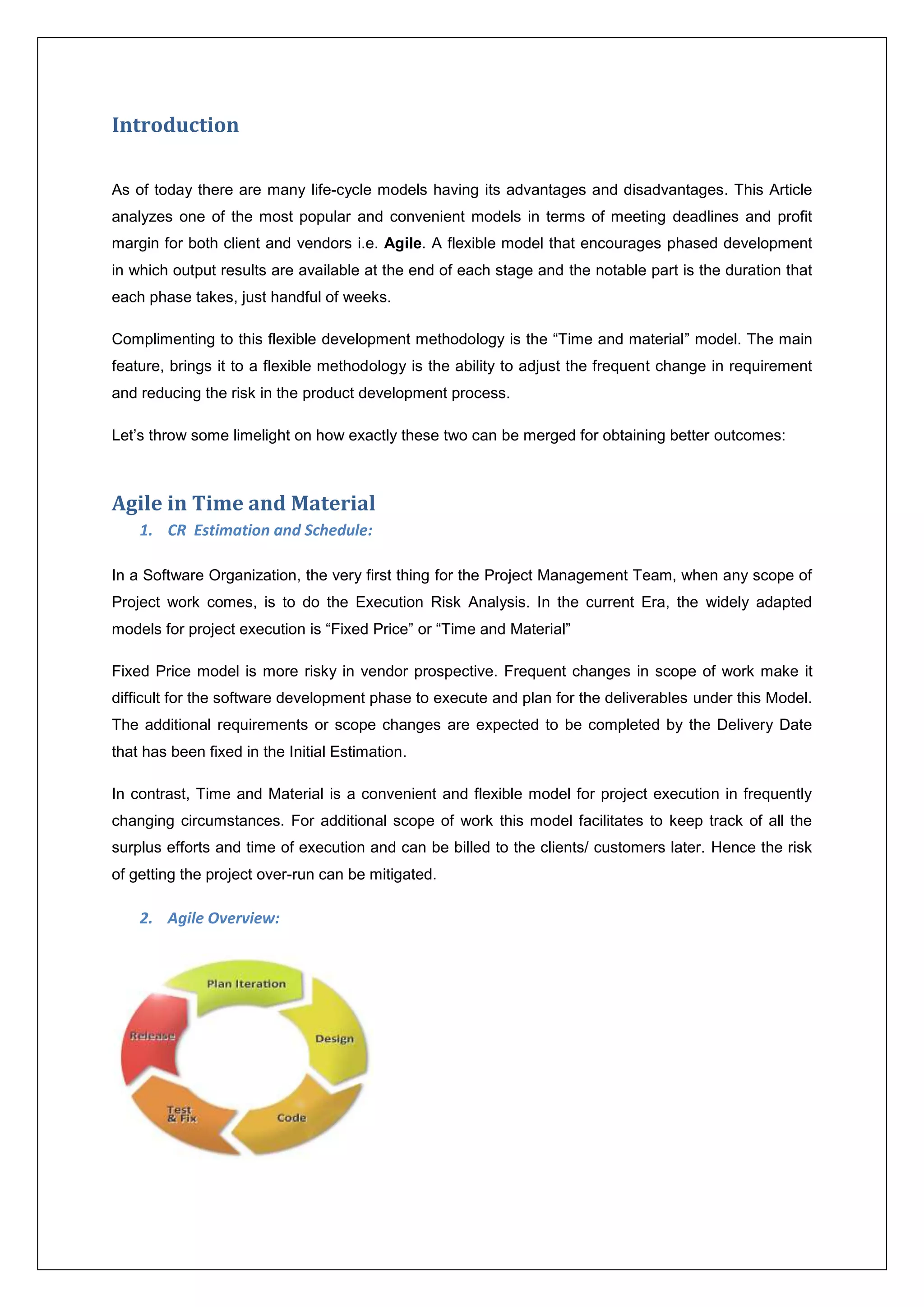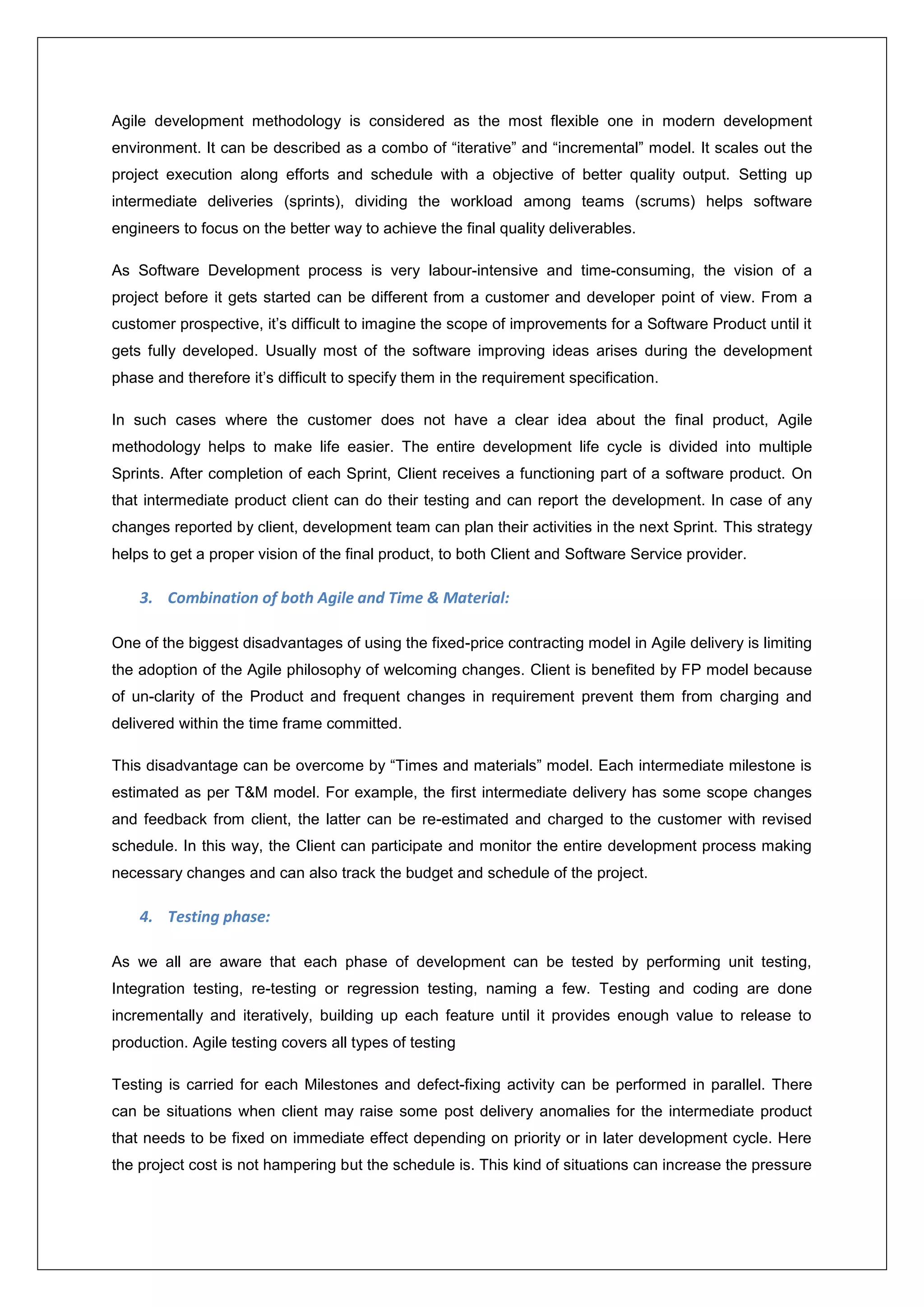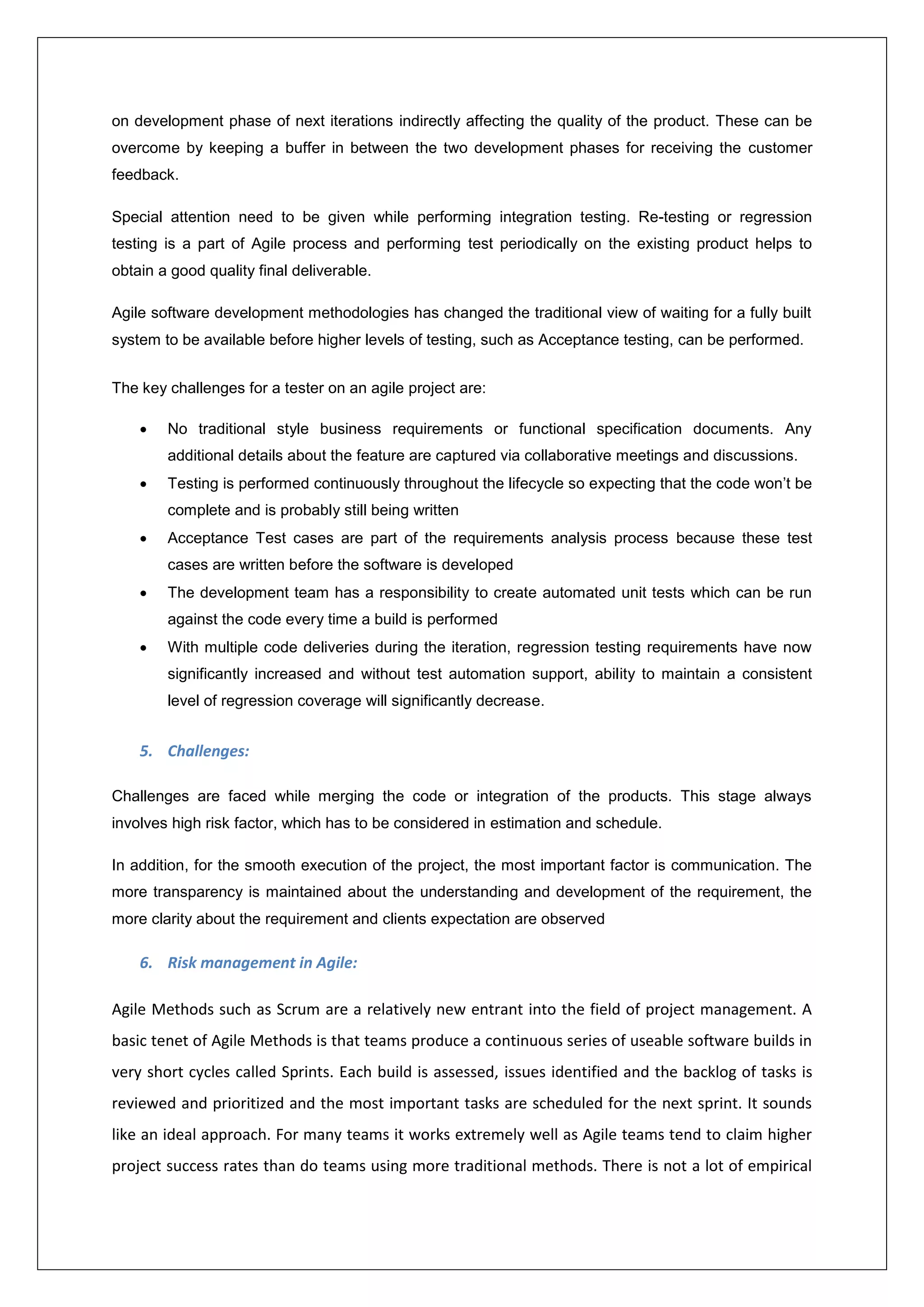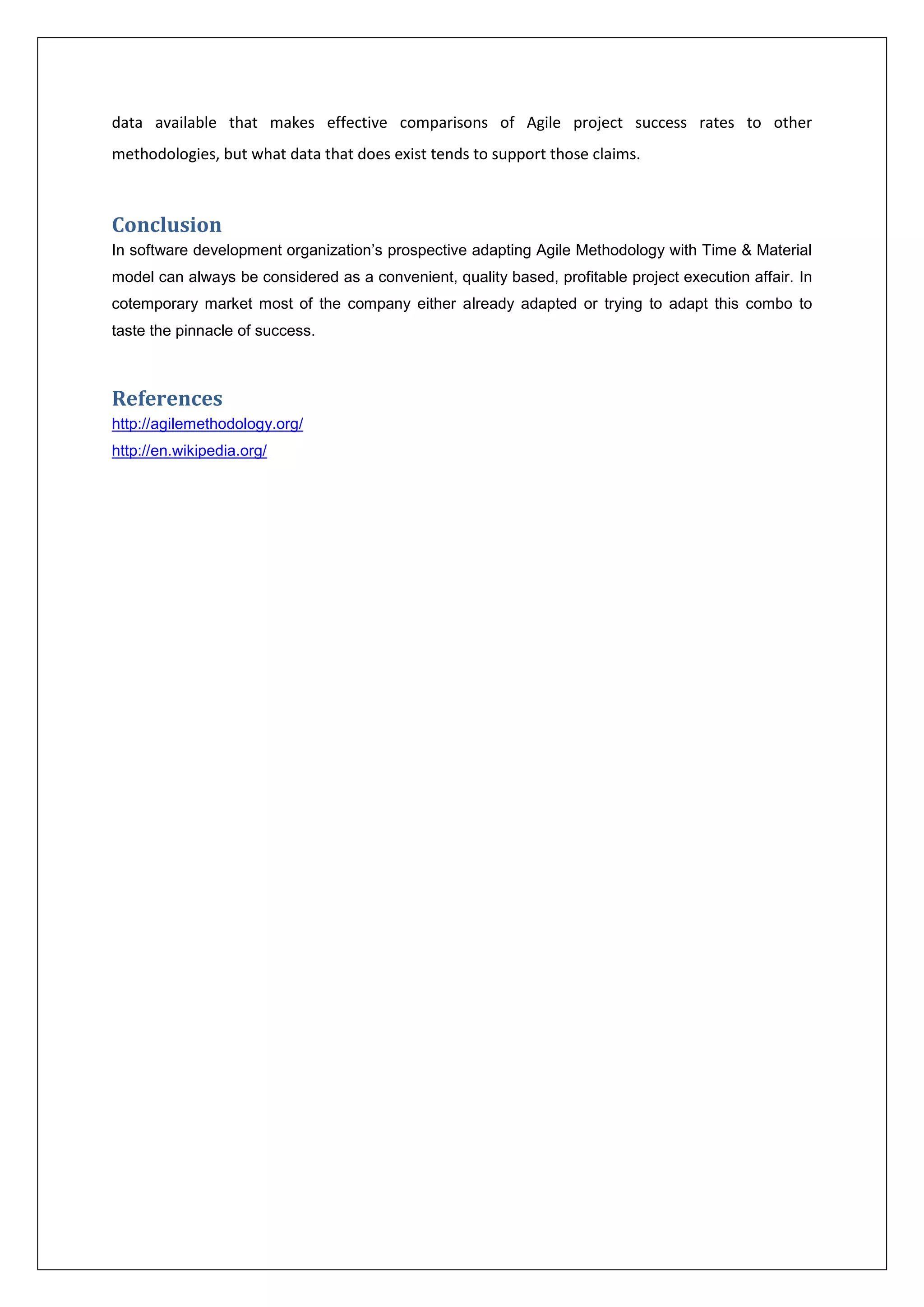This document discusses how process excellence can be achieved through the Agile methodology and Time and Material (T&M) estimation model. It explains that Agile allows for flexible development through short sprints and T&M allows clients to participate in and monitor development while controlling costs. Combining Agile and T&M allows clients to provide feedback and request changes iteratively, while developers track time spent to bill clients accurately.
